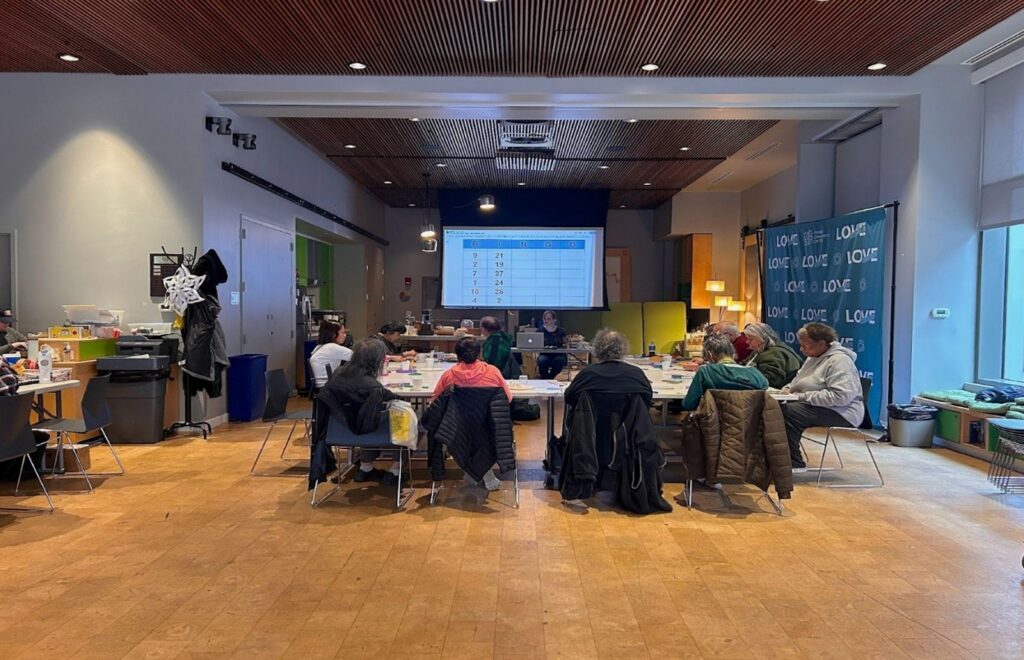Abstract:
Planning for health and well-being is essential as people age, particularly those who consider themselves to be Solo Agers. Procrastination and fear often contribute to the low rate of plan completion. Research suggests that people will achieve better results when they work together. A new planning model and tool—The Backup Plan—can help Solo Agers build community and craft a personal safety net.
Key Words:
planning, community building, shared problem solving, supported decision making, peer support
Two common themes run though many articles written about older adults who are aging solo: the importance of planning and of developing social capital. But, despite a plethora of retirement and late-life planning resources, the track record for Solos Agers is not great. As one illustration, a 2021 AARP study of Solos Agers found that some 78% said they had done little or no planning for ongoing living assistance should they need it as they age (Thayer, 2021).
So, what can we do to help the avoiders and procrastinators get over the hump? And, of equal importance, how can we help Solos Agers build a community of support at a time when overall participation in organizations of all kinds has declined? In Minnesota, the answer is The Backup Plan model, which tackles both issues together and flips the traditional approach on its head.
The Backup Plan
Since 2019, a series of small groups have been testing The Backup Plan model, which includes the new model and its associated materials. Evidence-based, the model seeks to help Solo Agers develop a community of support through shared work and problem solving, and by creating individual “backup plans.” The Backup Plan is a set of strategies, supporters, and other resources Solos Agers can rely upon if they experience a health event or a change in circumstances—large or small—where they cannot or choose not to function alone.
The model also can help organizations that focus on older adults develop the capacity to better serve those who are aging alone. For example, the test groups in Minnesota—three Living at Home/Block Nurse Programs (Living at Home Network, n.d.)—traditionally have provided assistance with issues like foot care and rides to medical appointments, but have not helped clients to build personal safety nets.
Unlike other planning approaches that typically focus on housing and finances, the focus of The Backup Plan is on helping Solo Agers build skills and gain confidence through health and well-being decision making. The belief is that health and well-being often are core concerns in the second half of life. Health often drives other kinds of decisions as people age. A decision about housing will likely be influenced by needs related to the availability and cost of health/well-being support. There are no checklists of tasks or lists of “shoulds” for users to follow. Instead, the model encourages Solo Agers to work on achieving results in seven different areas. It is a person-centered approach, recognizing that to be effective, a plan must fit with who Solo Agers are, where they live, their cultural traditions, and the available resources.
‘The Backup Plan model incorporates a Just-In-Time/Just Enough philosophy.’
Though the materials can be used by individuals, the model is based on the idea that a successful plan—one that produces the intended results—relies on skill, personal accountability, and a community of support. For that reason, the model works best when used in a group setting where the group is supported by a coach.
The Backup Plan inverts more typical planning models in other significant ways. First, it is not structured as a program or a workshop with an “expert” leading participants through a series of predetermined steps. It employs a “bottom-up” approach in which group members determine the content and the process.
Second, while there are guidelines and basic information offered through a participant manual, the goal is for the group to direct itself. The coach is a volunteer whose job is to help the group move forward, not to control the group or be the source of all information the group might need.
The Backup Plan’s model incorporates a Just-In-Time/Just Enough philosophy. For most of us, planning means working toward a tangible goal, such as buying a house or saving for college, over a long period. This kind of approach makes sense for the first half of life because we are starting at ground level, working to accumulate resources, and generally have a number of years before us. However, the second half of life differs from the first half in several important ways:
- There is more emphasis on using up resources rather than accumulating them;
- The time perspective generally changes from unlimited to limited; and
- Our targets are more fluid and less tangible.
Thus, The Backup Plan is built around each person’s self-knowledge and what realistically might occur in the near future, rather than imaginary situations that may or may not happen many years from now. It is pointless for Solos Agers to worry about who will be available to accompany them to a medical appointment in 10 years, but they can identify options for such support right now.
This Just-in-Time/Just Enough approach makes planning less scary and reduces magical thinking, or “the belief that one’s ideas, thoughts, actions and words, or use of symbols can influence the course of events in the material world” (Britannica, 2023). And, it is not about ignoring the future, but rather about helping Solo Agers become more agile and pragmatic planners.
Creating the Model
The overarching goal for this initiative was to create a “universal” model—one that would be useful and adaptable to a range of Solo Agers, regardless of income level, where they lived, and other personal circumstances. It also had to be low cost, scalable, and able to tap into the life experiences of users. Finally, it had to be based upon solid evidence that the overall approach would yield the hoped-for benefits. To that end, ideas and research from a number of sources fed into the development process.
A few examples:
Persuading another person to think and/or act differently than in the past is essentially an exercise in behavior change—an unspoken objective of a planning process. Throughout history, educators of all kinds have believed that “experts” are a key ingredient in producing such change. There is a growing body of research and experience, however, showing the significant impact of “peers” on change.
One recent example is the work of Damon Centola at the University of Pennsylvania, who looked at the phenomenon of Oprah Winfrey’s Book Club. While it is easy to assume that sales of new novels were largely influenced by Oprah’s endorsement, that proved not to be the case. Centola’s (2021) research showed that book buying increased only when friends started recommending the book to one another.
Work related to decision making also helped to shape The Backup Plan. According to research at the Bloomberg School of Health, older adults typically rely upon consultations with various family members to make health and treatment decisions (Dy & Purnell, 2012). Given the absence of family resources for Solo Agers, The Backup Plan borrows concepts from those who advocate for “supported decision making” on behalf of people who are developmentally disabled. Supported decision making is based on the belief that people can and should have the opportunity to make as many decisions as possible for themselves with appropriate support. It is a belief that can be extended to people who are not developmentally challenged (American Bar Association, 2020).
Results of Pilot Tests
Several nonprofit organizations in Minnesota have been trying out The Backup Plan model for nearly two years. In April 2022, participants in these groups gathered to connect with one another and to assess their experiences. During the gathering, participants were asked to chart their planning progress in six areas, including identifying a reliable emergency contact, creating an Advance Care Directive, and identifying at least one person/organization to serve as a decision supporter. Though accomplishments varied, all participants had made some progress. Most important, there was widespread agreement about the value in being part of a group.
A few testimonials from participants:
- “The groups provide a monthly kick in the butt.”
- “As I take steps I feel more in charge, feel less lost. (I may not get it all done, but I have a developing plan.)”
- “The loose but existing structure works for me.”
Coaches for the groups also were given an opportunity to comment on their experiences and had this to say:
- “Training and materials were very adequate—gave a pretty good idea of what to expect, how groups would work.”
- “The model doesn’t require professional facilitation skills/experience. The coach role worked—draw upon the group.”
- “I’m amazed at the group that comes each month.”
Moving Forward
As this article was being written, a second edition of the user guide and guide for coaches was available for wider distribution. The updated material is based on the experiences and feedback from the pilot groups. Also under discussion is the possibility of working with a local nonprofit that would recruit individuals interested in serving as coaches for organizations that wish to implement the model but are unable to assign a staff member to the coach role.
If you are interested in making use of The Backup Plan model and materials, you may contact Linda Camp at thebackupplan2@gmail.com.
Linda J. Camp, MPS, is an independent consultant, writer, and researcher living in St. Paul, MN. She has been working on strategies and solutions to better support solo older adults since 2015.
Photo credit: Shutterstock/DaLiu
References
The American Bar Association Commission on Law and Aging. (2020). Supported decision-making across the age spectrum. https://sdmny.org/resources/supporting-decision-making-across-the-age-spectrum
Britannica. (2023). Magical thinking. www.britannica.com/science/magical-thinking
Centola. D. (2021). Change: How to make big things happen. Little, Brown & Spark.
Dy, S. M., & Purnell, T. S. (2012). Key concepts relevant to quality of complex and shared decision-making in health care: A literature review. Social Science & Medicine, 74(4), 582-587.
Living at Home Network. (n.d.). The Network. https://lahnetwork.org/about/
Thayer, C. (2021, February). Solo agers are optimistic about quality of life. AARP Research. https://doi.org/10.26419/res.00428.001













